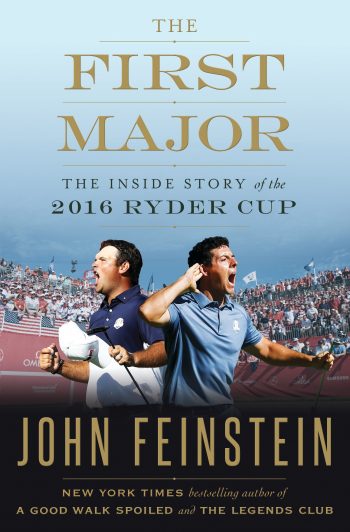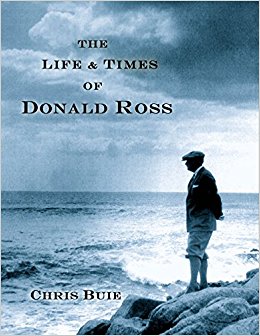Book Reviews by Les Schupak
Attempting to encapsulate more than 500 years of golf history is a daunting task, yet if anyone could, it would be Roger McStravick, winner of the USGA’s Herbert Warren Wind Book Award for his 2015 volume “St. Andrews: In the Footsteps of Old Tom Morris.” A native of that ancient golf and university town, he is amply qualified to chronicle the origins, traditions, events, and personalities he captures in The History of Golf (St. Andrews Golf Press. £30).
He deftly and concisely examines such vital topics as the genesis of the game, the evolution and enduring principles of golf's rules, the birth of golfing societies, and the celebrated professionals -- past and present -- and exceptional amateurs who have made the game what it is. Other chapters focus on the growing influence and accomplishments of women golfers, as well as the role caddies have played from the game's earliest days.
The author is an aficionado of links golf and provides a comprehensive review of golf architecture from the days when sheep and cattle roamed the green to how the current generation of course designers use high-tech equipment, scientific growing methodologies and advanced care applications to blend the links tradition with modern American design concepts.
He leaves plenty of room to cover the "Majors" as well as team events such as the Walker, Ryder, Curtis, Solheim, and Presidents Cups, and spotlights the players who provided ageless memories for golfers around the world.
Complementing the words are dozens of historical documents, paintings, illustrations, portraits, and course routing maps. Images of ancient balls and implements, original clubhouse structures, and trophies including golf's oldest -- not the Claret Jug -- add a stirring visual sense of golf's past.
While a book spanning so many centuries would seem to require at least a thousand pages, the author's vast knowledge and deep writing skill enable him to condense it into 150 pages that can be read in less time than it takes to play a round of golf.

"The First Major" by John Feinstein (Doubleday, $28.95) is the author's 28th book and arguably his finest. In reporting on and analyzing the hotly-contested 2016 Ryder Cup, he presents an engaging and insightful chronicle of not just this match between pros from the U.S. and Europe, but prior ones that heightened the drama and importance of this event and future ones.
Feinstein is known for his ability to keep readers' eyes riveted to the action unfolding on a playing field, court, or course -- and once again he does not disappoint as he leads up to the three days of competition played before sellout crowds at Hazeltine National Golf Club in the small town of Chaska, MN. Provocative quotes and personal recollections from a wealth of players dot the pages, in particular the controversial comments during the 2014 post-match press conference by Phil Mickelson that sparked the creation of a U.S. Ryder Cup Task Force.
Observations from several former team Captains including Jack Nicklaus, Seve Ballesteros, Paul McGinley, Paul Azinger, and Tom Watson give a first-hand glimpse of the pressures teams face. The 2016 Captains, Davis Love III and Darren Clarke, receive an especially perceptive examination, as Feinstein shows their distinctive personalities in the midst of enormous tension and stress.
Anecdotes and stories spill forth from nearly every page. The interactions and friction between Tiger Woods and Phil Mickelson, the colorful and unbridled exuberance of Ian Poulter, the friendly rivalry between Jordan Spieth and his playing partner, Patrick Reed, along with the brouhaha caused by Danny Willett's brother are described in detail with accuracy and style, keeping the reader entertained up to the decisive and thrilling victory of the American squad. The book also sets the scene for the 2018 Ryder Cup to be played at Le Golf National in Paris, France. Feinstein undoubtedly will be in attendance to capture every shot and every shout of Olé! Olé! and U! S! A!

Donald Ross is one of the game's most respected and revered individuals, but how much does today's golfer really know about him besides his trademark "teacup greens?" Not enough, I suspect, unless you happen to be one of the several hundred knowledgeable members of the Donald Ross Society.
But now Chris Buie, with "The Life & Times of Donald Ross" (Classics of Golf, $75), has crafted an exhaustive and exceptional biography of the famed golf architect, clubmaker, instructor, player, and golf professional.
During the first half of the 20th Century, Ross was at the forefront, along with fellow course designers C.B. Macdonald and A.W. Tillinghast, in establishing the sport in this country. Buie credits Ross with having a prominent role as a cultural figure, albeit an unheralded one. From his designs, country clubs and public golf facilities sprouted across the country, making golf an integral part of American society. The author provides an historically sweeping scenario of golf's rapid rise as Ross and a number of other Scottish immigrants transformed a portion of the American landscape and lifestyle.
A skilled biographer, Buie researched and included scores of books, articles, photographs, routing maps, and personal recollections from Ross family members, golf historians, and past and current golf architects. While Ross's personal life is well chronicled here, the emphasis is on his career achievements, discussed extensively by an array of the foremost golf professionals, golf course architects and journalists. A large segment of the book is devoted to many of his most exceptional designs, including two-page pictorial spreads of these courses along with descriptive commentary.
Donald Ross was instrumental in America's fascination with golf. His imagination and vision provided beauty, challenge, and quality to the courses he created. So, too, has Buie contributed a fitting and comprehensive tribute to one of golf's most important figures.

